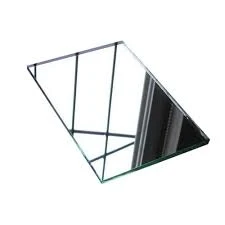

The Rise of Curved Insulated Glass Units A Modern Architectural Solution
In the ever-evolving world of architecture and design, the demand for innovative materials that enhance both aesthetics and functionality continues to grow. One remarkable advancement is the development of curved insulated glass units (CIGUs). These glass solutions not only provide superior thermal insulation but also bring a new dimension to architectural design, allowing for the creation of visually striking structures.
Curved insulated glass units are composed of multiple layers of glass, typically two or three, that are separated by an insulating spacer and filled with inert gas, such as argon or krypton. This construction minimizes thermal transfer, effectively reducing energy costs and improving indoor comfort. The curvature of the glass adds an artistic flair while also enhancing the building's aerodynamic properties. This dual functionality is crucial in modern architecture, where style and sustainability go hand in hand.
One of the primary benefits of CIGUs is their energy efficiency. In a world increasingly concerned with climate change, architects and builders are looking for materials that can help reduce a building's energy footprint. CIGUs contribute to this goal significantly. Their insulating properties keep heat in during the winter and out during the summer, which decreases the reliance on heating and air conditioning systems. The result is lower energy bills and a reduced environmental impact, making CIGUs a sustainable choice for modern constructions.
Aesthetically, curved insulated glass units present a unique opportunity for architects to push the boundaries of design. Traditional flat glass can restrict design possibilities, often leading to boxy structures that lack character. However, CIGUs allow for sweeping curves and fluid shapes that can transform mundane buildings into iconic landmarks. From gently arched facades to dramatic domes, the possibilities are nearly limitless. This flexibility in design is not just about looks; it can also improve natural light penetration and enhance the overall atmosphere within a space.
Moreover, the use of CIGUs supports the trend toward open, airy designs that prioritize connectivity with the outdoor environment. For instance, large, curved glass walls can seamlessly blend indoor and outdoor spaces, creating an inviting ambiance that encourages interaction with nature. This design philosophy aligns with contemporary sustainable practices, where biophilic design—integrating nature into architectural spaces—is increasingly popular.

Manufacturing curved insulated glass units involves advanced technologies that ensure precision and quality. The process begins with the careful selection of high-performance glass that can be curved without compromising strength or integrity. Sophisticated bending techniques, including heat bending and cold bending, allow for the creation of custom shapes tailored to specific architectural visions. Once shaped, the glass is treated to ensure durability and resilience, standing up to environmental challenges.
While CIGUs offer numerous advantages, there are considerations to keep in mind during the design and installation process. Proper planning is essential to ensure that the curvature of the glass aligns with structural requirements and that building codes are met. Working with skilled professionals who specialize in curved glass can mitigate potential issues, ensuring that the installation process is smooth and efficient.
In terms of cost, CIGUs can be more expensive than traditional flat glass units due to the specialized manufacturing processes and materials involved. However, for many projects, the investment pays off in the long run through energy savings and increased property value. Furthermore, the unique aesthetic appeal of curved glass can enhance the overall marketability of a building, making it a sound investment for developers.
Looking ahead, the market for curved insulated glass units is expected to grow as more architects and builders recognize their benefits. With advancements in technology and materials science, the production and environmental impact of CIGUs will continue to improve, making them an even more attractive choice for future projects. As sustainability and design continue to converge, CIGUs will play a critical role in shaping the skylines of tomorrow.
In conclusion, curved insulated glass units represent a harmonious blend of aesthetic appeal, energy efficiency, and innovative design. They offer architects a powerful tool to create iconic structures while promoting sustainable building practices. As this technology evolves, we can anticipate a future where curves and creativity take center stage in the architectural realm, ultimately transforming the way we experience the built environment.